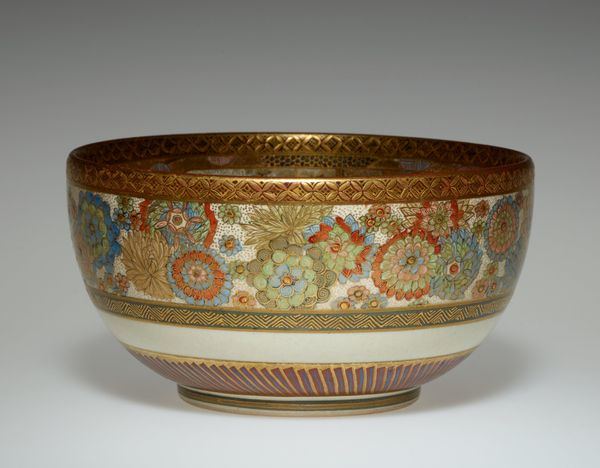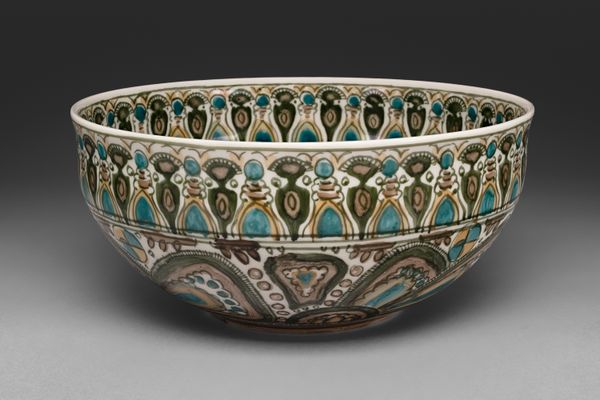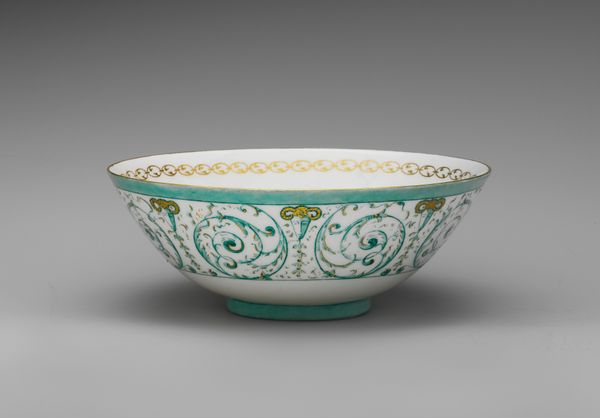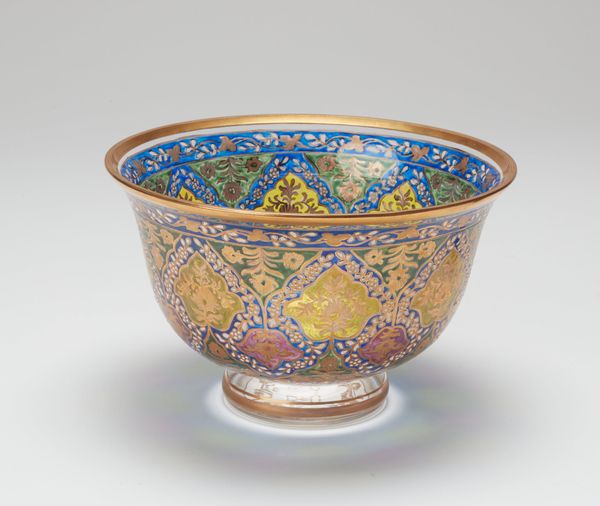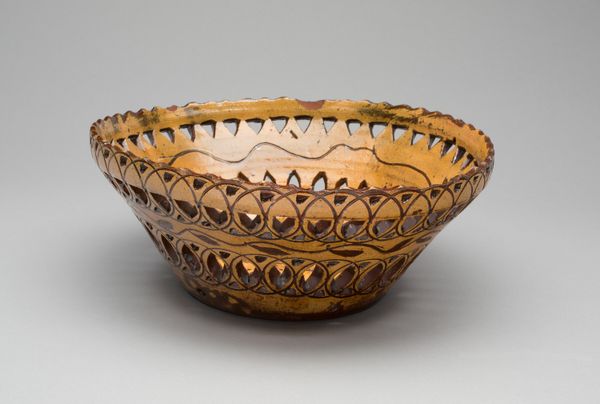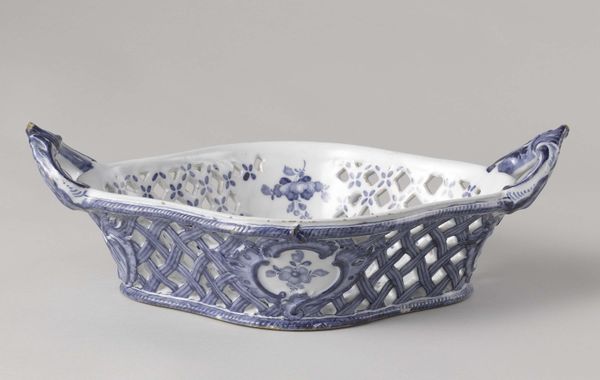
ceramic, glass
#
pottery
#
ceramic
#
glass
#
ceramic
#
decorative-art
Dimensions: 15.3 × Diam. 30.8 cm (6 × Diam. 12 1/8 in.)
Copyright: Public Domain
This footed bowl was created by Joseph Brocard in France in the late 19th century. It's made of glass and decorated with enamel, and its patterns and motifs invite us to consider the cultural exchange between France and the Islamic world during this period. Brocard was known for his revivalist approach, drawing inspiration from Islamic art, particularly the enameled glass produced in Syria and Egypt during the medieval period. The bowl’s intricate geometric patterns and floral motifs, combined with the use of rich colors, reflect this influence. France had a long history of trade and cultural exchange with the Middle East. Brocard was part of a broader movement that saw European artists and designers looking to non-Western cultures for inspiration. Understanding the social and institutional context in which Brocard was working can shed light on the bowl's meaning and significance. Museum archives and design history publications would be valuable resources for understanding Brocard's influences. Ultimately, this bowl reminds us that art is always shaped by the cultural and historical forces in which it is made.
Comments
No comments
Be the first to comment and join the conversation on the ultimate creative platform.
